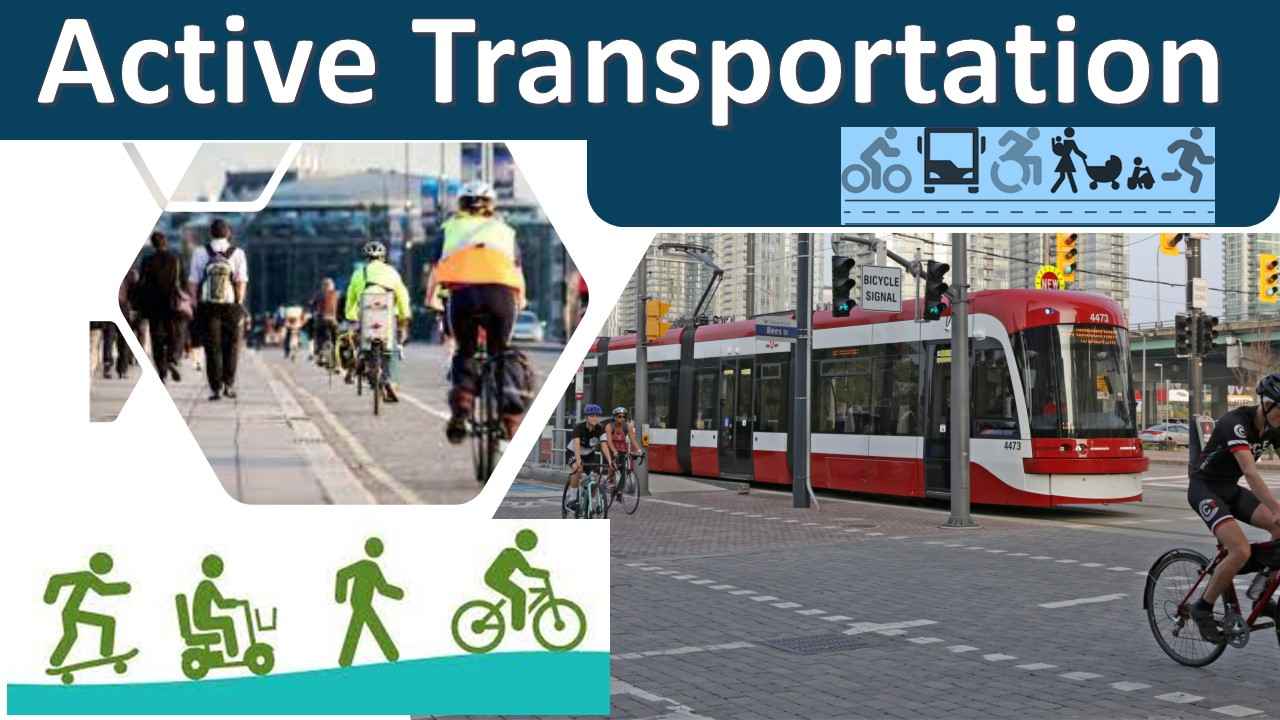Unlocking a Healthier, Greener Future: Embracing Active Transportation
- By
- Pooja |
- August 02, 2023 |
- Civil Engineering, Highway Engineering, Traffic Engineering,

Safety and Security Concerns for Active Transportation Users: Active transportation, such as walking, cycling, or using a wheelchair, can provide numerous benefits for individuals and communities. However, safety and security concerns can be significant barriers to active transportation adoption. Risks can include traffic accidents, crime, and inadequate lighting or infrastructure. Governments and organizations can address these concerns through strategies such as implementing safe cycling infrastructure, improving lighting in high-risk areas, and offering educational programs on safe walking practices. By prioritizing safety and security for active transportation users, communities can encourage more individuals to adopt these modes of transportation, leading to improved health and environmental outcomes.
Overcoming Barriers to Active Transportation: Despite the many benefits of active transportation, there are often barriers that prevent people from using these modes of transportation, such as inclement weather, challenging terrain, and long distances. To overcome these barriers, communities can invest in infrastructure and amenities that support active transportation, such as covered bike storage, bike-share programs, and public transit that accommodates bicycles. Additionally, governments can provide incentives for active transportation, such as tax credits for bicycle purchases, and provide education on ways to overcome barriers, such as dressing appropriately for the weather or using electric bikes to navigate challenging terrain.
Potential Impacts of Active Transportation on Health and Wellbeing, Environmental Sustainability, and Local Economies: Active transportation can have significant impacts on health and wellbeing, environmental sustainability, and local economies. For example, by promoting physical activity, active transportation can lead to improved health outcomes and reduced healthcare costs. Additionally, active transportation can reduce greenhouse gas emissions and improve air quality, leading to better environmental outcomes. Finally, by supporting local businesses and reducing congestion, active transportation can benefit local economies. Communities can maximize these benefits by investing in infrastructure that supports active transportation and promoting active transportation through educational programs and incentives.
Future Trends and Developments in Active Transportation: The future of active transportation is likely to see continued growth and innovation. Advances in technology, such as electric bicycles and autonomous vehicles, may make active transportation more accessible and convenient. Additionally, the COVID-19 pandemic has highlighted the benefits of active transportation, leading to increased interest in and investment in these modes of transportation. Communities may also prioritize equity in active transportation infrastructure, ensuring that all members of the community have access to safe and convenient active transportation options. Overall, the future of active transportation is bright, and communities that prioritize and invest in these modes of transportation can enjoy significant health, environmental, and economic benefits.
In addition to these trends, there may be a shift towards multi-modal transportation, where individuals combine various modes of transportation, such as cycling and public transit, to complete their journeys. This can provide increased flexibility and convenience for individuals, as well as reduce congestion on roads and parking demands.
Another potential development in active transportation is the use of micro-mobility devices, such as electric scooters and electric skateboards, as a mode of transportation. These devices can be an accessible and affordable option for short trips, especially in urban areas. However, regulations and infrastructure will need to be developed to ensure their safe use and integration into existing transportation systems.
Finally, there may be an increased focus on active transportation as a means of addressing climate change. As communities and governments work towards reducing carbon emissions, active transportation can be a significant contributor to achieving these goals. This may lead to increased investment in infrastructure and incentives for active transportation adoption.
Overall, the future of active transportation is likely to see continued growth and innovation, with a focus on safety, convenience, and environmental sustainability. By prioritizing and investing in active transportation, communities can enjoy significant benefits for both individuals and the environment.
Outcome
One of the most promising trends in active transportation is the concept of "complete streets." Complete streets are designed to accommodate all modes of transportation, including walking, cycling, and public transit. They prioritize safety and accessibility for all users, regardless of age, ability, or mode of transportation. Complete streets can include features such as protected bike lanes, crosswalks, and pedestrian-friendly signals.
Another trend is the use of technology to improve active transportation infrastructure and accessibility. For example, mobile apps can provide real-time information on bike routes and parking availability, while sensors can be used to monitor air quality and traffic flow in order to improve safety and reduce congestion.
The COVID-19 pandemic has also accelerated the adoption of active transportation, as more people have sought out safe and socially distanced ways to travel. This has led to a surge in cycling and walking, as well as an increase in the popularity of e-bikes and e-scooters.
Finally, there may be a greater emphasis on equity and social justice in active transportation. Historically, transportation planning has often overlooked the needs of marginalized communities, leading to disparities in access and mobility. In the future, there may be a greater focus on addressing these inequities through targeted investments in infrastructure and outreach programs.
Overall, the future of active transportation is bright, with continued growth and innovation expected in the coming years. By prioritizing safety, accessibility, and sustainability, communities can encourage more individuals to adopt active transportation, leading to improved health outcomes, reduced greenhouse gas emissions, and stronger local economies.

Pooja
Founder at gcelab.com, Pooja is an Entrepreneur unlocking human potential. Working in the Principles of Lean Start-up, Pooja believes in Transparency and User Happiness the most. Pooja’s background in teaching gives her a sophisticated grasp on even the most tedious aspect of course building. She is passionate about people who believe that good is not enough.

